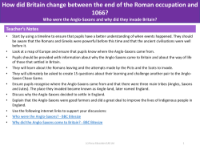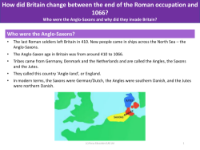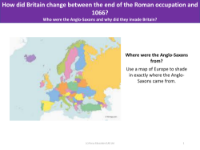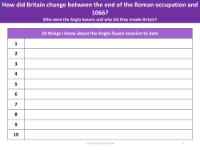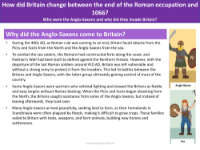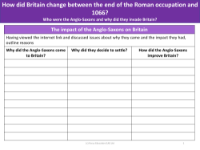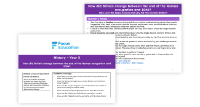Anglo-Saxons men, women and children - Info sheet
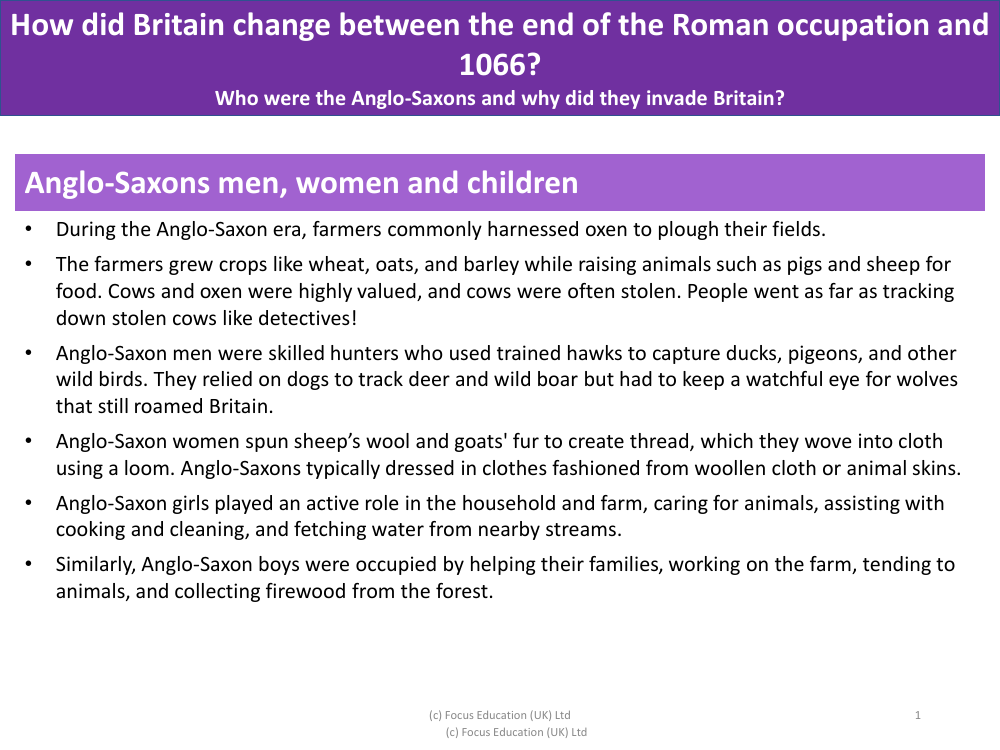
History Resource Description
The Anglo-Saxon era in Britain was marked by a society where agriculture played a central role in daily life. Farmers during this time relied on oxen to plough their fields, cultivating crops such as wheat, oats, and barley. Livestock was a crucial part of the economy, with pigs and sheep raised for food, while cows and oxen were particularly valued assets. Cattle theft was a common issue, leading to individuals undertaking investigations akin to modern-day detectives to recover stolen cows. Hunting was another significant activity for Anglo-Saxon men, who used trained hawks to catch birds and relied on dogs to pursue larger game like deer and wild boar, all while being cautious of the wolves that were still present in Britain at the time.
Anglo-Saxon women contributed to the household by spinning wool from sheep and fur from goats, creating thread to weave into cloth on looms. The clothing of the era was typically made from this woollen fabric or from animal skins. The domestic sphere also involved the younger generation; girls were engaged in activities such as caring for animals, helping with cooking and cleaning, and fetching water. Boys, too, assisted their families by working on farms, looking after animals, and collecting firewood from forests. This communal approach to work and living underscored the interconnectedness of family and farm life in Anglo-Saxon Britain.

